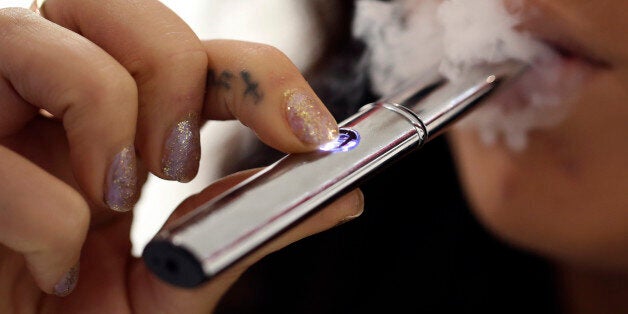
Co-authored by Dr. Amy Fairchild, Dr. Ronald Bayer, and Sharon H. Green
The latest volley in the furor over electronic cigarettes -- products that heat liquid nicotine rather than burn leaf tobacco -- is the new alarming data about poisoning. The National Poison Data System found that in 2013 there were 1,351 cases of poisoning from liquid nicotine. This is up 300-percent from last year, and the figures are predicted to double by next year. From The New York Times to Fox News to Forbes, there is a growing chorus of panic. According to the latter, now we know "the real risk" of e-cigarettes.
Not quite. The real issue is exposures compared with what?
According to the National Poison Data System, analgesics were the most common cause of exposures, with 322,016 in 2012, and cosmetics and personal care products came in second, with 218,269 exposures in 2012 (and amongst kids under 5, exposures caused by cosmetics and personal care product exposures is number one, with 162,2800 exposures in 2012).
Furthermore, the AAPCC reported 10,356 exposures to highly concentrated packets of laundry detergent in children 5 and under in 2013. The convenience of clean laundry is a bigger threat than accidental exposure to the liquid nicotine in e-cigarettes.
Even energy drinks with high levels of caffeine carry very similar risks. They report that last year poison centers received 3,028 reports of adverse effects from energy drinks. These, too, are unregulated by the FDA because, as the American Association of Poison Control Centers reports, "they are considered dietary supplements ... and there is no limit to the amount of caffeine that can go in them."
If, as predicted, e-cigarettes result in double the number of liquid nicotine exposures this year, they are still a very long way even from making it into the top 25.
There is broad agreement that e-cigarettes should be regulated. Packaging should be as safe as possible to minimize the risks of unintended, harmful exposures. The quality of nicotine should be carefully controlled, and toxins, carcinogens, and other contaminants minimized. Children and adolescents should be barred from purchasing this product, just like they are barred from buying alcohol and tobacco cigarettes.
But those are measures around which there is near-universal agreement. The battle is over whether regulation should effectively push them off the market. The attack on liquid nicotine is, in fact, an effort to suggest that even touching them represents a tremendous hazard and that these products have no place in our society.
We also need to ask ourselves why we don't talk about other exposures with the same sense of alarm. The National Poison Data System report for 2012 suggests that if we want to fly into a frenzy based on incendiary data, e-cigarettes need to get in line. We would prevent more harm by launching a cosmetics-free campaign. After all, there is no great public health benefit to wearing makeup or coiffing our hair. Would there be anything lost if we banned energy drinks, which are often high in calories? We could fight poisoning and the obesity epidemic in one stroke.
If they were a purely recreational product with no potential public health benefit, we would set the bar for poisonings much lower. A child's death is never just a statistic. But we have the potential to lose a great many current and future smokers if we take a zero-tolerance approach to these products. Some 400,000 Americans die each year from smoking-related causes. A billion deaths are predicted worldwide this century if the prevalence of smoking is not reduced.
The data on e-cigarettes is still uncertain and incomplete, but the weight of the published literature suggests that the vast majority of users are already smokers. Furthermore, e-cigarettes have already shown the potential to help people stop smoking, with the majority of studies finding that they work as well as, if not better than, things like nicotine gum and the patch.
An even better way to put the risks of e-cigarettes into perspective is to compare their risk of unintended harm to children with other public health measures that we accept in order to protect not just individual health but population health. Every year the CDC receives approximately 30,000 reports of adverse reactions to vaccines. Of these, 10 to 15 percent -- between 3,000 and 4,500 cases -- are considered serious, "resulting in permanent disability, hospitalization, life-threatening illnesses or death."
We need to take a cold, hard look at the evidence now and keep our eyes trained on the data as we move forward so that we can understand the population effects of e-cigarettes. Those of us who have taken a cautious stand in support of e-cigarettes based on tobacco's harvest of death need to be prepared to change our position based on the science. We must also be vigilant about efforts to distort data. That was the strategy of Big Tobacco. It shouldn't be the strategy of public health.